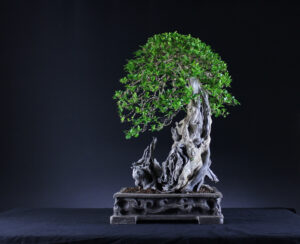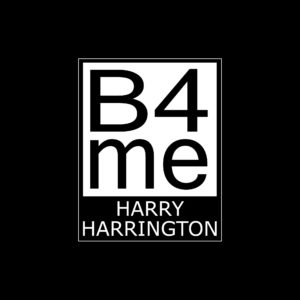There is no such thing as an indoor bonsai or an indoor tree. All bonsai are naturally outdoor trees and as such are better cultivated outside. The only exceptions are tropical species that can not tolerate lower temperatures at certain times of the year and without an artificial source of warmth would perish.
It is a relatively common sight to see indoor displays of Bonsai in books and magazines but it should be understood that these are only temporary. In Japan, Bonsai are commonly brought inside for 1 or 2 days at a time and are shown as a part of a tokoname display before being returned outside where they can recover.
There are two main reasons that temperate climate bonsai are not kept inside for any length of time. Firstly, all deciduous and coniferous trees need a period of dormancy which is only triggered by cooler temperatures. Without this dormancy, trees can continue to grow for anything up to 2 years before going dormant whatever the season or temperature; this enforced dormancy can often be fatal.
Secondly, it is difficult to provide adequate growing conditions for trees indoors. Inside, light levels are lower, humidity levels are very poor and trees suffer from lack of air circulation. For species that are hardy to frosts, it is far better to cultivate them outside all year round where conditions are conducive to their health and vigour.
Tropical species of bonsai on the other hand require temperatures above around 10-15°C (depending on individual species). In cool temperate areas of America and Europe this can mean that many tropical bonsai can only be kept outside for 2 or 3 months of the summer, the rest of the year adequate care must be provided inside. LIGHT
Indoors, light levels are very poor. Though imperceptible to the human eye, light levels drop rapidly the further you are from a natural source of light. It is said that light levels halve every 50cm further from a window you are. This means that for most tree species light levels are too low, even when stood on a bright window-sill. It needs to be understood that glass filters out many of the UV rays that plants require for the process of photosynthesis; many trees species can fail to receive enough light on a south-facing window-sill even though the heat of the sunlight is burning their leaves.
Trees that do not receive enough light will fail to grow strongly if at all. Any growth that is produced will tend to have long internodes and become ‘leggy’. Leaves will be over-sized in an effort to catch maximum light.
Some tropical species however are used to growing on the forest floor (ficus/ Serissa/ sageretia amongst others) in their natural habitat where there is naturally little light and these will cope with lower light levels indoors.
Trees grown indoors should be placed on sunny window-sills and/or provided with overhead fluorescent lamps. This should be sufficient for many tropical species but will probably still be too dark for ordinary woody temperate species.
Ordinary fluorescent lamps or aquarium lights kept about 6 inches above the tree for 12-16 hours a day can be used to supplement light levels.
Do not place trees on window-sills that are closed behind curtains at night, the temperature in between the window and curtain can rapidly drop below room temperature during the night.
DORMANCY
As previously stated, woody temperate-climate plants require a dormant period. This is a period of at least 42 days where temperatures are 10°C or lower. Most deciduous trees will lose their leaves at this time whilst some others such as Ulmus parvifolia, the Chinese Elm may remain evergreen. Evergreen species, in particular conifers will slow their growth rate considerably.
However, tropical species do not have a dormant period as such and will continue to grow all year round.
AIR CIRCULATION AND HUMIDITY
Central heating systems radically reduce humidity in our homes to near desert levels. All bonsai need good humidity levels to grow well indoors and there are several ways to address this problem.
Firstly, never place your bonsai above a radiator where humidity levels are especially poor. In general, radiators should be avoided as they also cause wild fluctuations in temperature to their the surrounding environment.
Secondly, trees can be misted to create higher humidity levels. Misting also cleans the leaves of dust and dirt that would otherwise collect. Don’t bother however misting religiously everyday, as excessive misting can build up salt deposits on leaves and water runoff can result in over-wet bonsai compost. It is far more important that the surrounding area is kept humid and this is best provided by use of a humidity or gravel tray. This is a flat tray that holds water into which small stones or pebbles are placed. The bonsai is placed on top of the stones so none of the pot touches the water, as the water evaporates over the course of 1 or 2 days it provides a continual humid atmosphere around the tree. It is important that the bonsai pot can still drain fully and it should sit high enough above the water in the humidity tray to be able to do so.
PESTS AND DISEASES
Trees are just as likely to be attacked by pets and diseases inside as they are out. Bugs that would normally be killed outside during the cold of winter are able to thrive indoors year round!
Special attention should be paid to spider mites which positively enjoy the low humidity indoor environment. Spider mites cannot be seen with the naked eye but their presence can be noted by the appearance of very fine webbing between leaves. These can be dealt with using ordinary insecticides.
Fungus gnats are very small fly-like bugs that can occasionally be found in and around the compost of bonsai, these are nearly always drawn to over-wet composts and can be dealt with using insecticides. If the compost of the bonsai is found to be too wet all the time, consider a change in your watering practices or compost if it is poor draining. Fungus gnats are nearly always brought indoors when moss growing on the surface of the compost is not removed beforehand.
SUMMARY
Growing bonsai indoors successfully is not straightforward; many trees can continue to grow seemingly unaffected for anything up to 1 or 2 years before showing any outward signs of distress. However, after this time, trees tend to have lost so much health and vigour that they are very hard to keep alive. Do not assume that the tree you brought growing indoors at the garden centre or bonsai retailer will grow indoors on a permanent basis. Very often, outdoor species are sold in an indoor environment simply for the convenience of the retailer. Always ask retailers if your tree is intended for indoor or outdoor cultivation. It should be noted here that you cannot SUCCESSFULLY cultivate coniferous bonsai indoors for more than 1-2 years. It has literally never be done before.
If you specifically require a tree for growing indoors, choose a species that will be more able to cope with this stressful environment. This typically means using tropical species that have little dormancy needs and can tolerate low light levels and poor humidity.
Place your tree on a well lit window-sill that is not shut off at night and is not above a radiator. Ensure that the leaves are not burnt in strong sunlight. Make use of a humidity tray and enjoy!!
|




